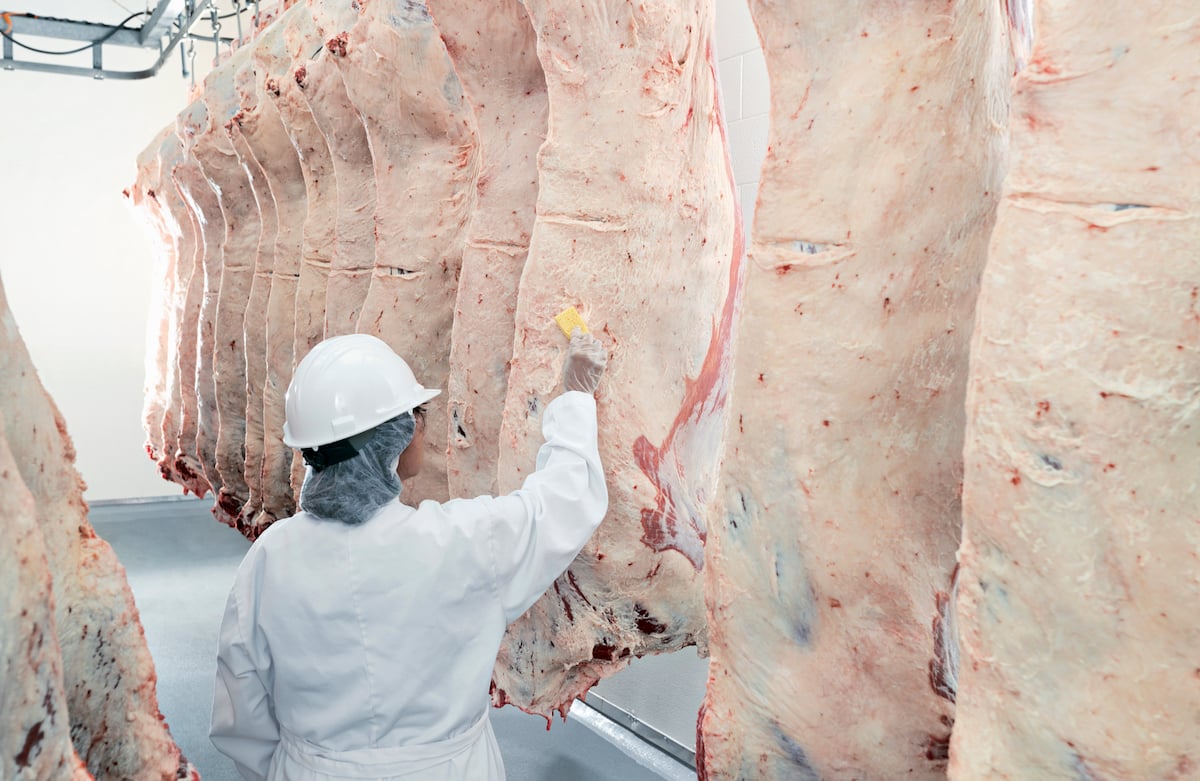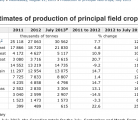WINNIPEG, Manitoba, Aug 21 (Reuters) – Canadian farmers are set to harvest their biggest wheat crop in 22 years and a record canola crop ever, Statistics Canada said on Wednesday in its first report on 2013 production.
The report supported canola prices, which were also lifted by rising U.S. crop futures. Soybeans and corn were rising on a revised forecast for next week showing a hotter and drier trend than had been expected.
Read Also

U.S. livestock: Cattle, hogs end week on high note
Cattle contracts and nearby hog futures ended the week on a high note after a week rife with losses. Most-traded…
Statistics Canada pegged the all-wheat crop at 30.6 million tonnes, up 12.9 percent from last year and slightly above the average trade expectation of 30.4 million.
Canola production looks set to reach 14.7 million tonnes, up 11.5 percent, but well below the average trade estimate of 15.5 million tonnes.
Statistics Canada’s numbers probably underestimate the size of the canola crop, which has developed rapidly in favourable weather since the agency’s farmer survey period of July 24 to Aug. 5, said Ken Ball, a futures and options broker at PI Financial Corp.
“The yield potential now has grown dramatically,” Ball said. “We’re still facing a monster canola crop.”
Canada is the world’s biggest canola grower and exporter, and the sixth-largest wheat producer.
Finding buyers for all that canola, which is used mainly to produce vegetable oil and meal for livestock, will not be difficult since last year’s disappointing crop thinned supplies, Ball said.
StatsCan pegged the average canola yield at 33.7 bushels per acre, handily exceeding last year’s 27.7 bushels.
All-wheat production is on course for the highest level since 1991, largely based on the agency’s estimate of a record-high spring wheat yield of 43.1 bu. per acre.
The extra Canadian supplies partly make up for losses in U.S. winter wheat production due to drought, Ball said.
Harvesting is just getting under way in the main growing areas of Western Canada, with most of the crop needing more time to mature.
The weather forecast shows no significant frost in Western Canada until possibly early September, said Bruce Burnett, weather and crop specialist at grain marketer CWB, formerly known as the Canadian Wheat Board.
“For spring wheat and canola, if we’re frost-free to the end of this month, we’ll see the bulk of the crop mature enough that it won’t be affected significantly by frost,” Burnett said on a conference call organized by Minneapolis Grain Exchange.
Oat production is expected to reach 2.9 million tonnes, and barley output is set for 8.8 million tonnes, both up about 12 percent from last year.
Farmers are expected to harvest a record-large 13.1 million tonnes of grain corn, just above last year’s production, and 4.8 million tonnes of soybeans, down 1.2 percent.
StatsCan’s next report on crop production is due Oct. 4.
While the report added some momentum to canola futures, the main driver of prices today is the latest weather forecast for the U.S. Midwest.
Meteorologists expect an atmospheric high-pressure ridge to develop over the Midwest, which would increase temperatures and block moisture from moving into the crop belt.
“At least a third of the crop belt will remain dry for filling crops, with the greatest threat to soybean yields,” said Joel Widenor, meteorologist for Commodity Weather Group.
“Warm temperatures will also prevail, aiding growth rates but adding to stress as the highs reach the low to mid 90s (degrees Fahrenheit) next week,” Widenor said.
Drier and warmer weather through the end of August may begin trimming yield prospects for the U.S. corn and soybean crops, an agricultural meteorologist said on Wednesday. “There’s enough soil moisture in most areas for now, but crops will need some rain by September to avoid damage,” said Andy Karst, meteorologist for World Weather Inc.
Gains in soybean and corn futures were slowed by reports of potential bumper yields for each crop from a U.S. crop tour.
ProFarmer crop scouts on an annual tour in the Midwest this week reported excellent yield potential for corn and soybeans in Indiana and in Nebraska. However, the crops were lagging normal maturity, leaving them vulnerable to harm from late-season dryness or an early frost.
Reuters reporter Karl Plume and Chip Flory, ProFarmer crop tour leader, reported on Wednesday that crop potential was very good in south central Iowa, but dryness was beginning to become a concern. Also, there was evidence of late plantings and slow crop development.
















